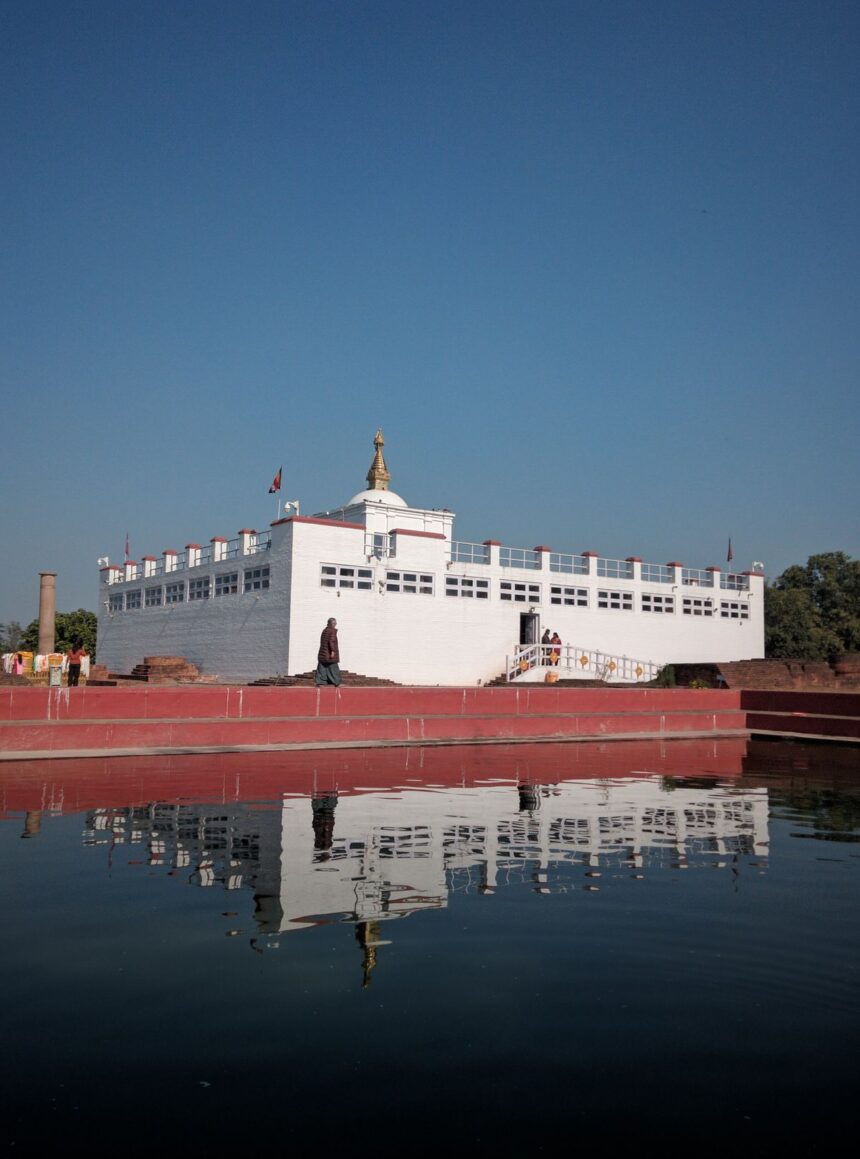Introduction
Lumbini, located in the Terai plains of Nepal, is the birthplace of Lord Gautama Buddha, making it one of the most sacred Buddhist pilgrimage sites in the world. Beyond its spiritual significance, Lumbini offers serene gardens, ancient monuments, monasteries, and cultural experiences, making it an ideal destination for cheap vacations infused with history and spirituality.
- Introduction
- History of Lumbini
- Fascinating Facts About Lumbini
- Timeline of Lumbini
- Significance of Lumbini
- 1. Religious Significance
- 2. Cultural Importance
- 3. Historical Value
- 4. Tourism & Education
- 5. Economic Contribution
- Observance & Cultural Activities
- Wishing at Lumbini
- Daily Life Impact
- FAQs About Lumbini
- Important Tips for Visitors
- Importance in Society
- Conclusion
Visitors can experience peaceful surroundings, learn about Buddhist philosophy, and explore heritage sites, creating a profound connection to Nepalese culture, history, and spirituality.
This guide covers history, fascinating facts, timeline, significance, observance, wishing, FAQs, daily life impact, and societal importance, written in a human-friendly and engaging style.
History of Lumbini
Ancient Origins: Lumbini is mentioned in ancient Buddhist texts, marking it as the birthplace of Siddhartha Gautama around 563 BCE.
Ashoka Pillar: Emperor Ashoka of India visited Lumbini in 249 BCE, erecting a stone pillar to commemorate Buddha’s birthplace.
Rediscovery: Rediscovered in the late 19th century by German archaeologist Alois Anton Führer.
UNESCO World Heritage Site: Declared a UNESCO World Heritage Site in 1997 for its religious and historical significance.
Fun Fact: Lumbini literally means “the lovely” or “beautiful place,” reflecting its serene and sacred environment.
Fascinating Facts About Lumbini
Birthplace of Buddha: The exact site of Lord Buddha’s birth is marked by the Maya Devi Temple, surrounded by gardens and sacred ponds.
Ashoka Pillar: One of the earliest Indian inscriptions outside India, symbolizing ancient cultural links.
Sacred Garden: Lumbini is divided into the Sacred Garden, Monastic Zone, and Cultural Zone, offering spiritual and cultural experiences.
Monastic Zone: Features Buddhist monasteries built by different countries, representing global Buddhist architecture and traditions.
Meditation & Spiritual Retreats: Ideal for meditation, yoga, and spiritual learning, attracting pilgrims worldwide.
Biodiversity: Lush gardens and ponds support various birds, flora, and peaceful natural surroundings.
Pilgrimage Destination: Hosts Buddha Jayanti and other religious festivals, drawing devotees globally.
Timeline of Lumbini
563 BCE: Birth of Siddhartha Gautama (Buddha).
249 BCE: Emperor Ashoka visits and erects the Ashoka Pillar.
19th Century: Rediscovered by European archaeologists.
1950s: Development of pilgrimage infrastructure begins.
1997: UNESCO designates Lumbini as a World Heritage Site.
Present: Global pilgrimage and tourist destination with active cultural and spiritual programs.
Significance of Lumbini
1. Religious Significance
Lumbini is one of the four major Buddhist pilgrimage sites, along with Bodh Gaya, Sarnath, and Kushinagar, symbolizing spiritual awakening, peace, and enlightenment.
2. Cultural Importance
The Monastic Zone features international monasteries representing Japanese, Thai, Chinese, Tibetan, and other traditions, showcasing diverse Buddhist culture.
3. Historical Value
Home to ancient inscriptions, ruins, and archaeological sites, Lumbini preserves centuries of religious history and architectural heritage.
4. Tourism & Education
Attracts pilgrims, students, researchers, and tourists, offering spiritual, historical, and cultural learning opportunities.
5. Economic Contribution
Supports local businesses, hotels, guides, handicrafts, and spiritual tourism, benefiting the community economically.
Observance & Cultural Activities
Buddha Jayanti: Celebrates the birth, enlightenment, and death of Buddha with rituals, prayers, and cultural programs.
Meditation Retreats: Many monasteries offer programs for meditation, mindfulness, and spiritual practice.
Pilgrim Offerings: Devotees engage in rituals, prayers, and lighting butter lamps.
International Cultural Events: Monastic Zone hosts festivals and cultural exchanges, representing global Buddhist traditions.
Wishing at Lumbini
Visitors can participate in wishing and prayer rituals at Maya Devi Temple or meditation gardens:
🕉️ “May peace, compassion, and wisdom fill my life and the lives of all beings.”
🌸 “Wishing for spiritual growth, harmony, and global understanding.”
🌿 “May the serenity of Lumbini inspire mindfulness, love, and gratitude.”
Such practices connect travelers to Lumbini’s spiritual essence.
Daily Life Impact
Lumbini impacts pilgrims, tourists, and locals:
For Visitors: Provides spiritual learning, meditation, and cultural exploration.
For Locals: Supports tourism, guiding, hospitality, handicrafts, and small businesses.
For Society: Promotes religious harmony, heritage preservation, and cultural education.
FAQs About Lumbini
Q1: How do I reach Lumbini?
A: Accessible by flight to Bhairahawa Airport, road from Pokhara or Kathmandu, and local transport to the Sacred Garden.
Q2: Is it a budget-friendly destination?
A: Yes, entry fees are minimal, and local accommodations and food are affordable.
Q3: When is the best time to visit?
A: October–March for pleasant weather and festival experiences.
Q4: Are guided tours available?
A: Yes, licensed guides provide historical, cultural, and spiritual insights.
Q5: Can I stay overnight in monasteries?
A: Some monasteries offer homestays and retreats for cultural and spiritual experiences.
Important Tips for Visitors
Wear modest clothing while visiting temples and monasteries.
Respect monastic rules and rituals.
Carry water, light snacks, and sun protection for garden walks.
Hire local guides for enriched understanding.
Visit early morning or late afternoon to enjoy tranquil surroundings.
Importance in Society
Lumbini is culturally, spiritually, and economically significant:
Religious Heritage: Preserves Buddhist traditions, rituals, and sacred architecture.
Economic Support: Supports tourism, hospitality, guiding, and handicrafts, benefiting local communities.
Educational Value: Provides insights into Buddhist philosophy, history, and art.
Spiritual Role: Promotes meditation, mindfulness, and inner peace.
Community Pride: Strengthens cultural identity, global religious awareness, and heritage preservation.
Conclusion
Lumbini is more than a birthplace; it is a spiritual sanctuary, cultural hub, and historical treasure. Affordable, serene, and inspiring, it offers travelers meditation, heritage exploration, and encounters with global Buddhist culture.
🌸 Wishing for You: May your visit to Lumbini inspire peace, compassion, and mindfulness, letting every temple, garden, and meditation session enrich your journey with spiritual insight, cultural understanding, and lasting memories.








